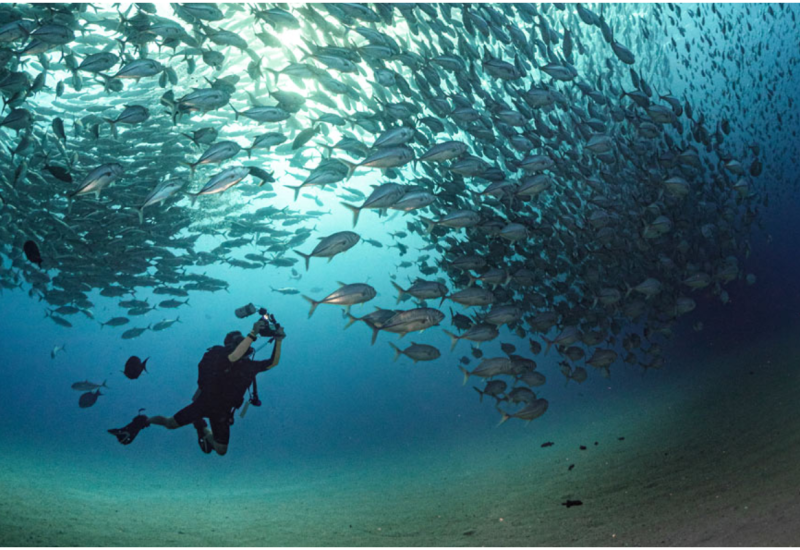Guide to Diving in Channel Islands National Marine Sanctuary
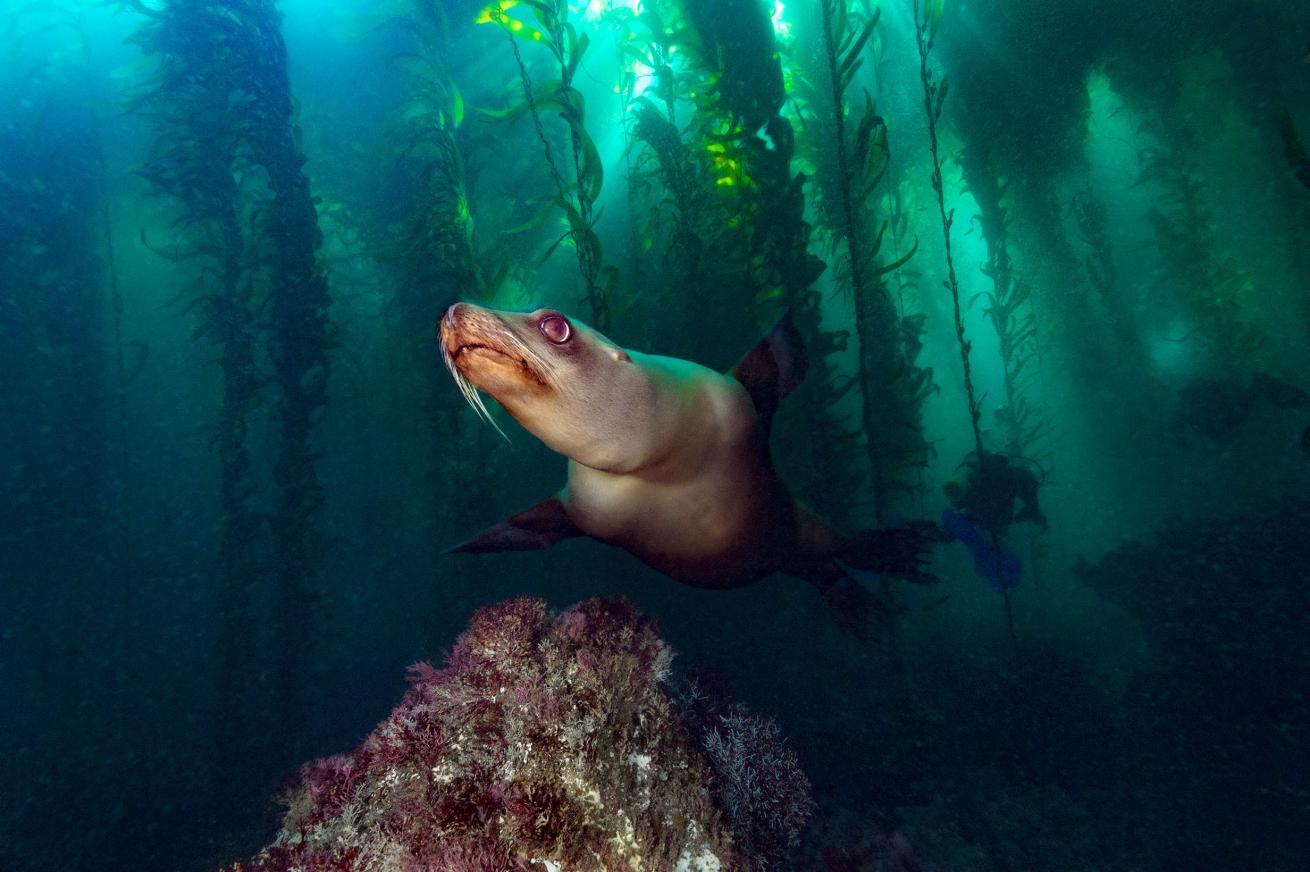
Curtis Wee/Get Into Your Sanctuary Photo ContestA playful sea lion approaches a group of divers in the kelp forests off Santa Barbara Island.
Channel Islands National Marine Sanctuary, often described as the “Galapagos of North America,” is home to incredible marine wildlife, kelp forests, shipwrecks and maritime heritage artifacts. The national marine sanctuary’s isolated position at the confluence of two major ocean currents creates remarkable biodiversity as the mingling of cool, nutrient-rich waters from the north with warm currents from the south form a dynamic transition zone.
As you dive the beautiful kelp forests and coves around the Channel Islands, you are immersed into the ancestral waters that shaped and sustained Chumash people—a maritime culture, known as hunters and gatherers—since time immemorial; their boats, called tomols, enabled abundant fishing and trade in this area.
Quick Facts:
Channel Islands National Marine Sanctuary, located off the coast of Santa Barbara and Ventura counties in California, is one of 15 national marine sanctuaries administered by NOAA’s Office of National Marine Sanctuaries. This special place encompasses 1,470 square miles of water from mean high tide to six nautical miles offshore of Santa Barbara, Anacapa, Santa Cruz, Santa Rosa and San Miguel islands. This ocean park is large and diverse, with each island offering a different diving experience.
Channel Islands National Marine Sanctuary was designated in 1980 to document, protect and understand the precious natural and cultural resources in the waters around the islands.
The boundary of Channel Islands National Marine Sanctuary overlaps with Channel Islands National Park by one nautical mile, but also encompasses deeper waters extending five nautical miles beyond the national park’s boundary, including deeper kelp forests that reach heights of 120 feet, historical shipwrecks and deep-sea coral habitats.
Related Reading: Tips on how to dive Channel Islands National Park
Many of the shipwrecks in Channel Islands National Marine Sanctuary are accessible to scuba divers at depths appealing to a variety of skill levels. Some of the sanctuary’s shallow wrecks are even visible to snorkelers and kayakers on the surface, depending on water conditions and seasonal kelp growth. Local charters offer dive trips to popular kelp, cove and rocky reef sites, as well as some of the wreck sites.
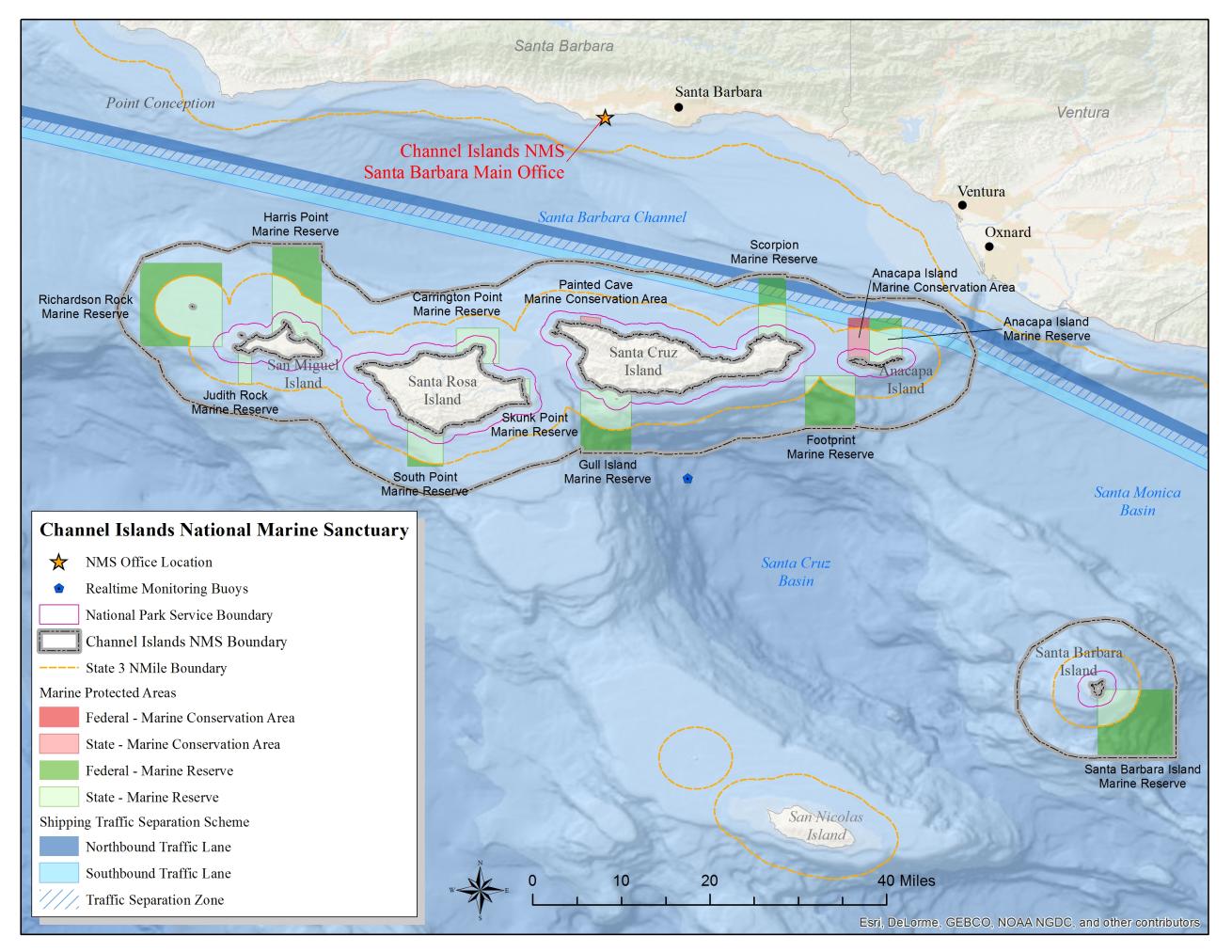
NOAAChannel Islands National Park includes all 5 islands and extends 1 nautical mile offshore. The waters of Channel Islands National Marine Sanctuary extend from the mean high tide line to 6 nautical miles offshore. Several state and federal marine conservation areas and marine reserves are also found within these waters.
Recommended Training:
Deep water, variable currents and unpredictable surface conditions combine to make for challenging intermediate to advanced diving at many of the Channel Islands dive locations. A dry suit certification is recommended for diving during colder months, and nitrox is recommended for deeper offshore dives. It’s always best to explore these areas with a trained professional familiar with the dive sites and conditions. For additional information on diving in these waters, refer to Channel Islands National Park’s guidelines.
DIVE IN: Explore the Blue 360° - Channel Islands Sea Lion Encounter
WATCH: Channel Islands National Marine Sanctuary Overview Video
What to See:
More than 800 species of marine life call Channel Islands National Marine Sanctuary home, and wildlife viewing opportunities change with each season. Reefs are dotted with colorful sea stars, urchins, nudibranchs and small reef fish. Divers also have a good chance of diving with sea lions or harbor seals.
The cliffs and sea caves that surround the national marine sanctuary make for incredible explorations both on land and underwater. While the Mediterranean climate of the sanctuary makes it a desirable destination year-round, some months offer unique potential wildlife sightings and conditions.
NOAA’s Office of National Marine Sanctuaries asks that all divers follow their Wildlife Viewing Guidelines while enjoying these underwater treasures.
When to Go:
Each season has its own character, unique weather and wildlife viewing opportunities, but many people recommend visiting in the early fall for warm weather, calm winds and seas, and optimal underwater visibility.
Average water temperatures are in the mid-60s°F (15°C), with lows in the low-to-mid 50s°F (10°C) in winter. Visibility ranges from 40-60 feet (12-18 meters) in winter and can drop to 15 feet or less in the spring when plankton blooms are prevalent. Visibility is at its peak around 60-90 feet (18-27 meters) in late summer and fall.
January: Northern elephant seal and pacific harbor seal pupping and breeding season on San Miguel Island continues through February. On Anacapa and Santa Barbara islands, California brown pelicans begin nesting through the month of February.
February: Gray whales can be seen traveling both southbound and northbound through the Channel Islands. Pacific harbor seal pupping season on San Miguel Island continues.
June: One of the best months to see whales. Gray whales migrate north to feeding grounds in Alaska through Channel Islands National Marine Sanctuary from calving grounds in Baja California, Mexico. Blue whales, fin whales and sei whales arrive in the Channel Islands to feed on krill from the nutrient-rich, upwelled water (late-May through September). Humpback whales feed in the rich, upwelled waters of Channel Islands National Marine Sanctuary from May through August.
July: In Channel Islands National Marine Sanctuary, fog diminishes near midsummer and underwater visibility increases.
August: Jellies of all kinds are abundant in California coastal waters as the oceanic season begins and upwelling winds start to relax (August through November). Calm winds and seas become more frequent near the end of summer.
October: Warm weather, calm winds and calm seas are common during the early fall months. This is the best time of year for snorkeling, kayaking and diving. Underwater visibility can reach 100 feet.
November: Temperatures begin to cool the Channel Islands. Winter storms often roar through the area.
December: Elephant seal pupping season on San Miguel Island begins.
Related Reading: A Rugged Dive Adventure Through Channel Islands National Park
Where to Dive:
Santa Barbara Island is the smallest of the islands, and is located 38 miles offshore from coastal California. The waters here boast lush kelp forests that offer divers a chance to spot giant black sea bass, bat rays and sea lions. About three-quarter miles offshore from the island, the popular dive site known as “The Arch” breaks the surface, extending from the sandy bottom at 55 feet deep. Northwest of The Arch is Hidden Reef, which provides hiding spots for lobsters and substrate for red gorgonians and purple hydrocorals. Most charters to Santa Barbara Island involve an overnight trip due to its distance from the mainland.
Anacapa Island has lush eelgrass beds and the easily accessible Anacapa Arch, which extends about 40 feet above the water’s surface. This island is a short boat trip from the coastal towns of Ventura and Oxnard, and dives are typically close to shore and vary in depths from a few feet up to 60 feet. The giant kelp forest at Cathedral Cove is a great place to spot sea lions, and Landings Cove is a macro photographer's dream filled with colorful nudibranchs and blennies. The shipwreck of the passenger vessel Winfield Scott rests within the boundaries of Channel Islands National Marine Sanctuary and Channel Islands National Park. This 170-year-old shipwreck takes divers back to the Gold Rush era that brought many seafarers through the area. For a more advanced dive on a deeper wreck site, the sunken aircraft U.S. Navy Grumman Avenger TBF-1-C (not shown on map) rests upright at about 127 feet deep about one mile offshore near Anacapa.
Santa Cruz Island features lush kelp forests with the chance to see schools of white sea bass and yellowtail. These dives can start close to shore, and range up to 80-90 feet in colder waters with forests of bullwhip kelp. The U.S. Navy Grumman Guardian AF-2W, which went down in 1954, sits upright on the bottom at about 60 feet and is in good condition.
Santa Rosa Island is much farther from the mainland and can experience strong winds, but dive sites such as The Pinnacles are great places to see colorful sea anemones and cold-water species that range all the way to Alaska. Depths can reach up to 100 feet and currents can be strong here. For those interested in historical shipwrecks, the remains of the three-masted Aggi can be found in 20 to 30 feet of water in Talcott Shoals, with some debris reaching depths of 50 feet.
San Miguel Island is the northernmost island with nutrient-rich waters supporting thick giant kelp beds where you can spot California sheephead and moray eels. At Point Bennett, you can find California sea lions, Steller's sea lions and Guadalupe fur seals, while a more sheltered site like Wyckoff Ledge offers opportunities to see wolf eels and colorful nudibranchs. The SS Cuba is open to the public for diving, and much of its steam-powered machinery is still visible a century after it sank in 1923.
Shipwrecks and historical artifacts within the waters of Channel Islands National Marine Sanctuary and Channel Islands National Park are protected. It is illegal to disturb or collect artifacts.
Booking through a charter is the best way to ensure that dive locations are selected by best overall conditions for that day.
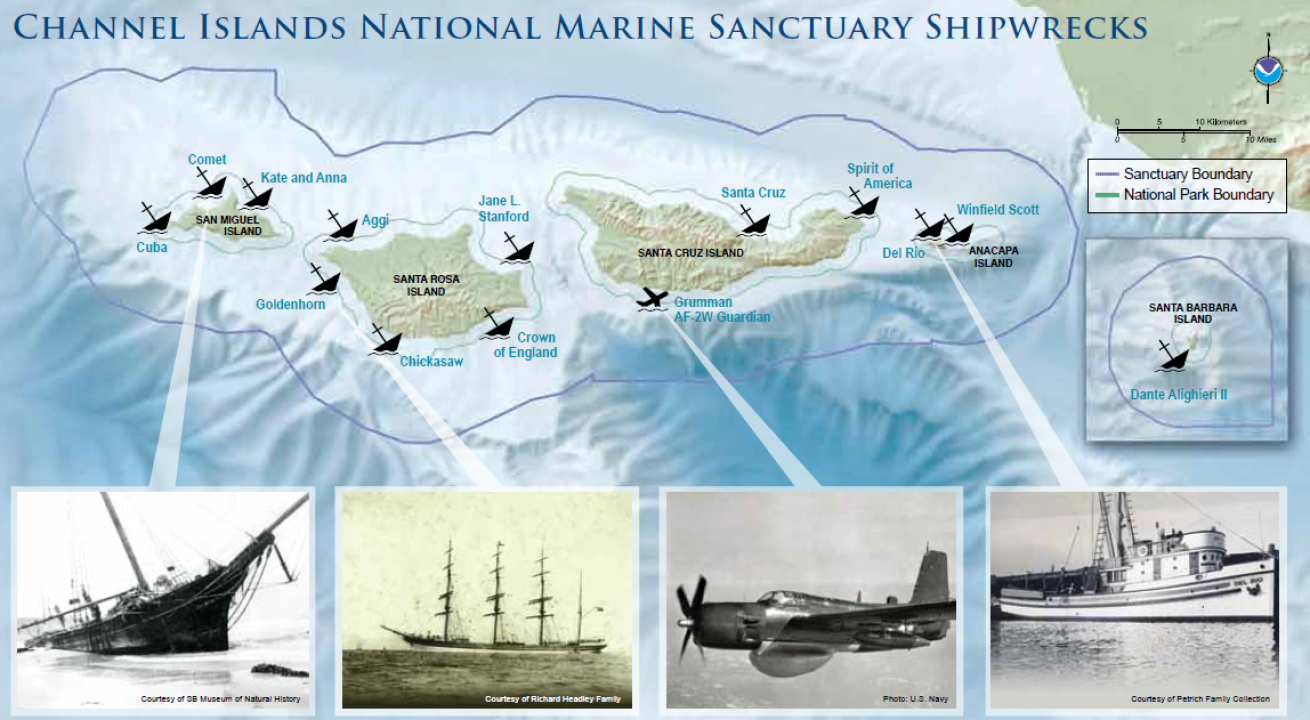
NOAAThe wrecks contained within Channel Islands National Marine Sanctuary’s boundaries tell an important story of maritime culture and history.
Getting There:
If traveling from outside of California, the closest airports to the Channel Islands are Los Angeles International Airport, Burbank (Bob Hope) Airport, Santa Barbara Airport, Camarillo Airport and Oxnard Airport.
You can either book a single-day dive trip or choose to camp out on the islands within Channel Islands National Park. NOAA’s Office of National Marine Sanctuaries has a camping itinerary available for those wishing to explore national park and sanctuary waters while embarking on a rustic camping adventure, or you can learn some great tips from this rugged dive adventure two Scuba Diving editors embarked on. To get to the campsites on the islands, book a reservation with the park concessionaire boats (Island Packers) or a private boat. The National Park Service has a guide on boat transportation to the islands.
If camping on the islands, please recreate responsibly and always pack out what you pack in. Follow the seven Leave No Trace principles.
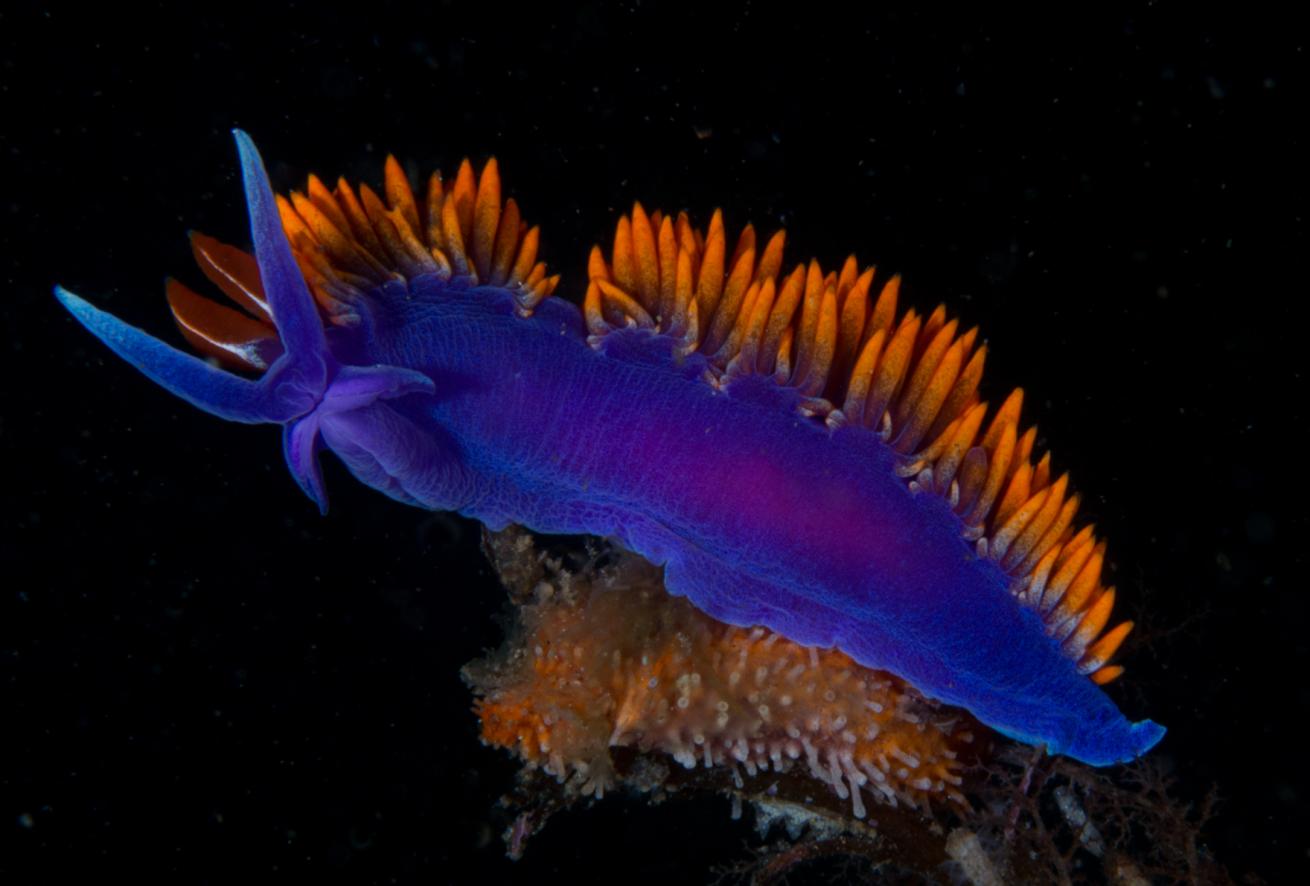
Cindy Shaw/ Get Into Your Sanctuary Photo ContestThere are so many different nudibranchs around Santa Cruz Island, like this Spanish shawl nudibranch.
Dive Charters:
This is a listing of known dive charters that visit the sanctuary departing out of Channel Islands, Ventura and Santa Barbara harbors. Additional private-charter vessels may also be available. If you wish to book a trip, please contact the charter operators directly for details about their booking procedures.
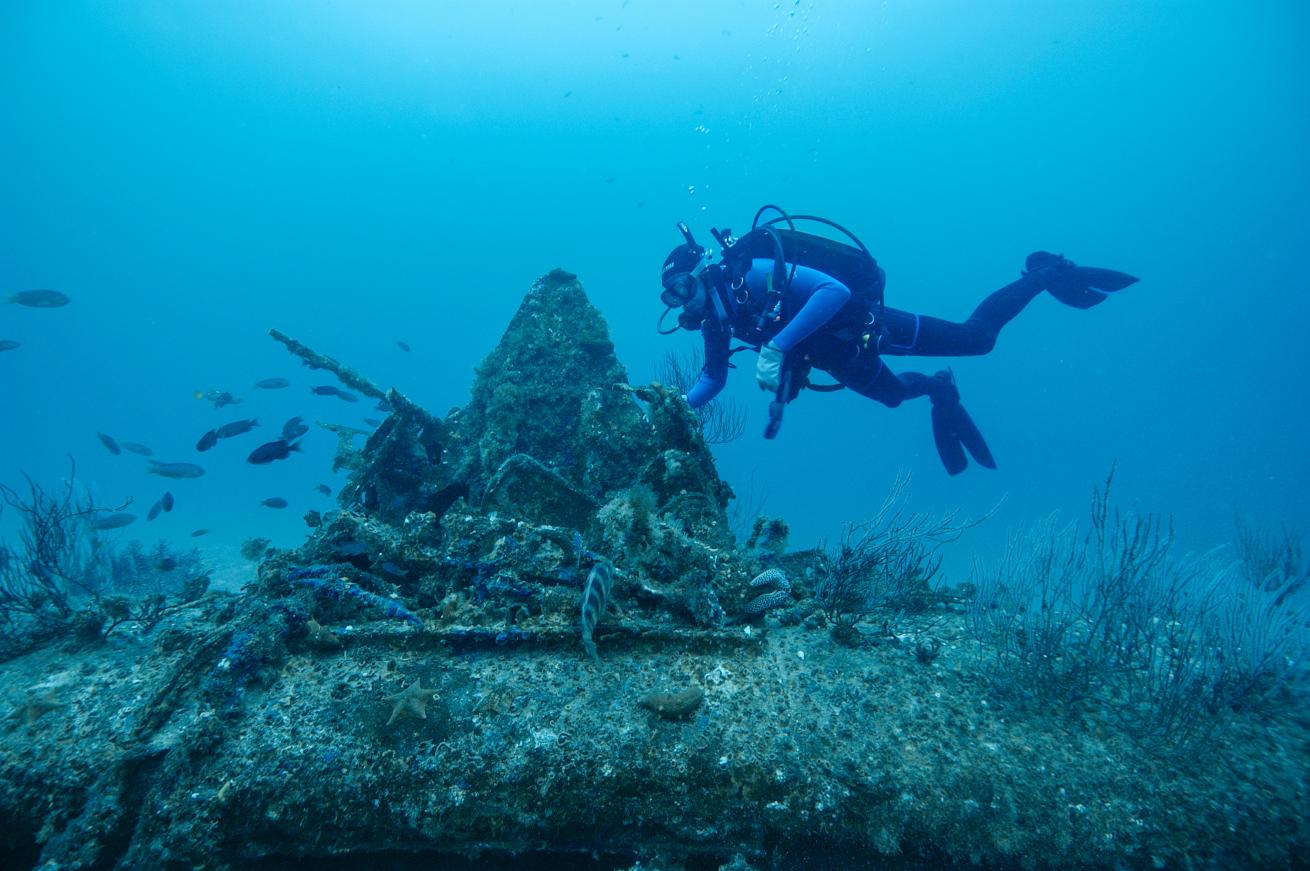
Robert Schwemmer/NOAAThe sunken WWII bomber, U.S. Navy Grumman Avenger TBF-1-C, first saw action during the Battle of Midway, and later went down near Anacapa Island during a training exercise in 1944.
Other Attractions:
Visit the towns of Ventura, Oxnard and Santa Barbara for lots of great dining and shopping opportunities.
Stop at the Channel Islands Maritime Museum in Channel Islands Harbor, the Santa Barbara Maritime Museum, and the Channel Islands National Park Visitor Center in Ventura, or visit any of the other nearby aquariums and museums.
Book a whale-watching tour for a chance to see the incredible wildlife that call Channel Islands National Marine Sanctuary home, such as Pacific gray whales, blue whales, humpback whales, sei whales and California sea lions. You might even be lucky enough to have a rare sighting of a basking shark!
Learn about Chumash history and culture by visiting the Santa Barbara Museum of Natural History, or participate in traditional Chumash ceremonies and events with the Wishtoyo Foundation. The northern Channel Islands and the surrounding waters have a rich human history, with archaeological records dating back more than 13,000 years.
Related Reading: A Diver's Guide to Fishing and Foraging in Channel Islands National Park
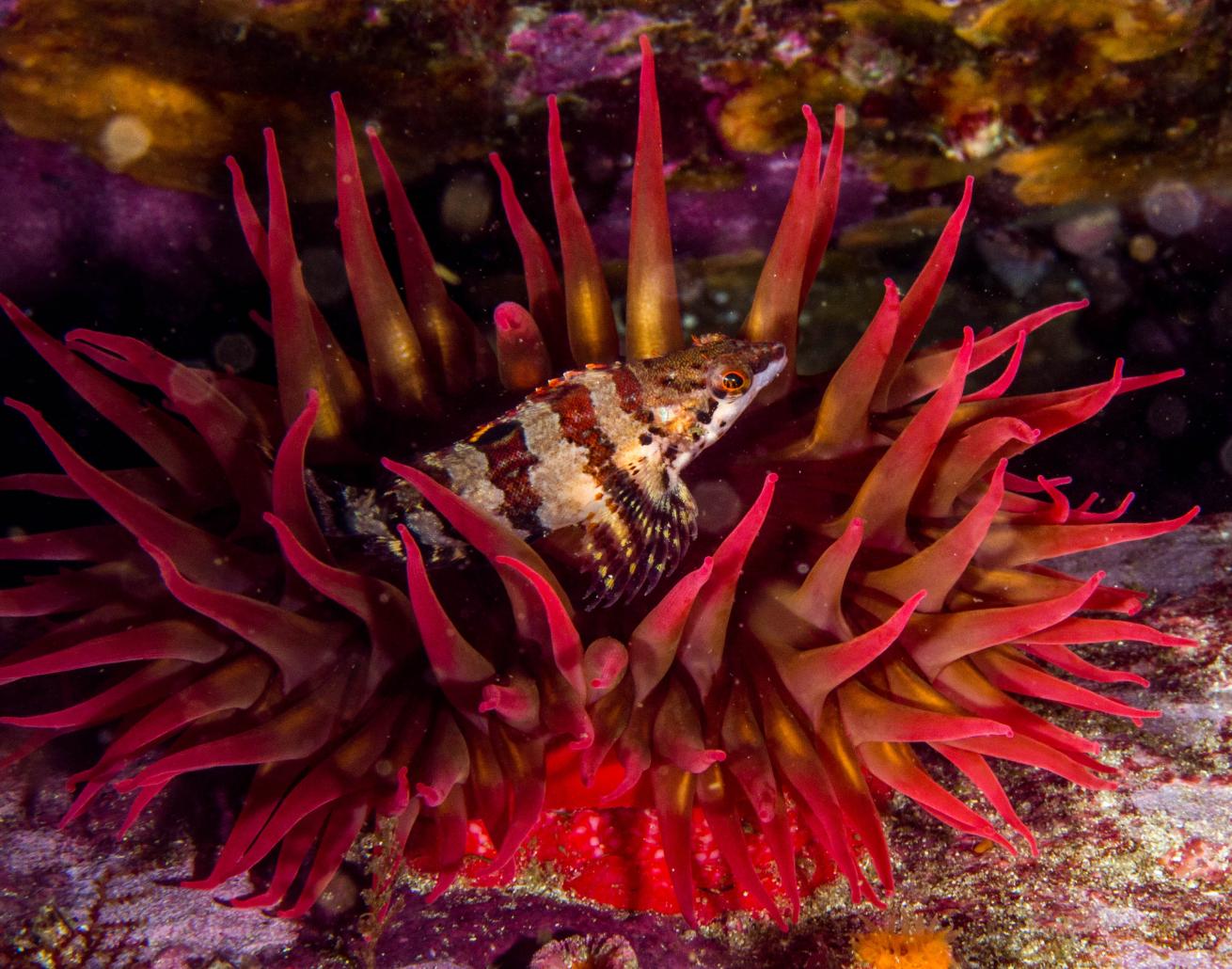
Cindy Shaw/Get Into Your Sanctuary Photo ContestA greenling with a rose anemone at San Miguel Island. A greenling with a rose anemone at San Miguel Island.
How You Can Help:
Scuba divers can help researchers document endangered white abalone (Haliotis sorenseni) around the Channel Islands. The Finding Hal website has ID cards and other resources to help divers identify and look for abalone during their dives, and a database where divers can submit their observations. The sanctuary is working with partners to offer hands-on training for divers interested in this citizen-science project. Inquire about upcoming dive charters for this project by contacting [email protected]. The ultimate goal is for divers in Channel Islands National Marine Sanctuary, Channel Islands National Park and the Southern California Bight to confidently spot and identify a living white abalone, photograph it, record its location and report the sighting to scientists.
Submit your photos of giant sea bass through the Spotting Giant Sea Bass initiative. Giant sea bass were once common along the Southern California coast, but in the 1970s the population tanked. By matching the unique spot patterns of individual giant sea bass in submitted images, researchers hope to learn more about their biology and life history.
Help raise awareness by entering your scuba pics from this sanctuary into the annual Get Into Your Sanctuary Photo Contest! Winning photos receive special recognition, and all submitted photos are used for educational and outreach purposes to raise awareness of these special places in America’s marine and Great Lakes waters.

